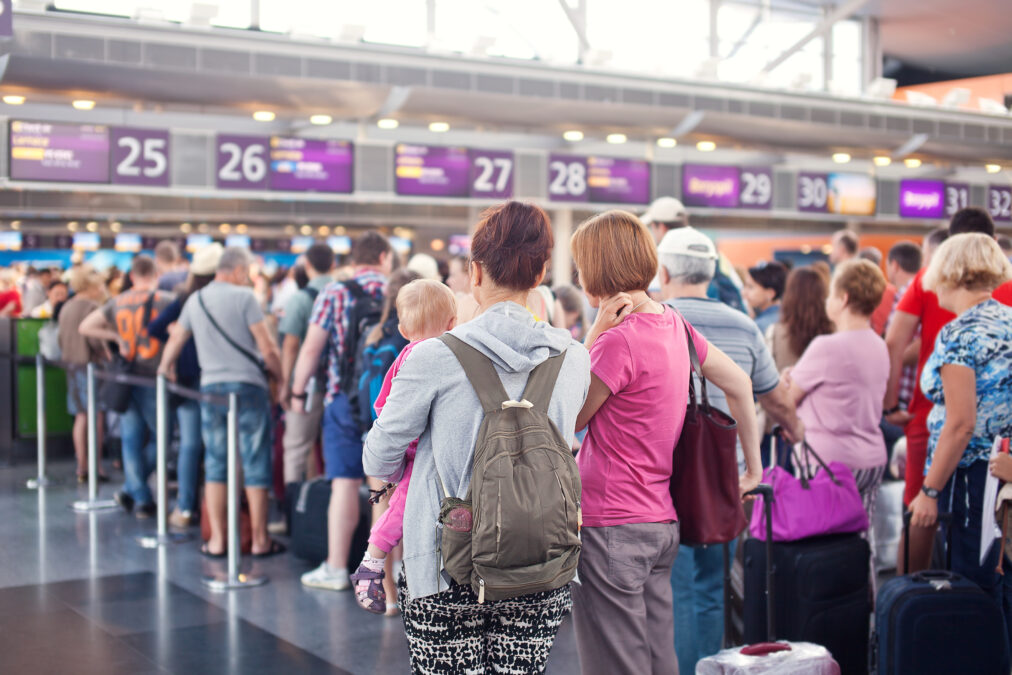Christian Floerkemeier, CTO of Scandit, discusses how smart data capture is innovating the experience of air travel passengers
The air travel industry was hit hard by pandemic lockdowns and restrictions. Among the challenges for airports and airlines to overcome were red zone restrictions, vaccine passports, social distancing, and uncertainties around passenger volume. In fact, a McKinsey report found that the COVID-19 pandemic resulted in airlines haemorrhaging $168 billion in economic losses in 2020. While the leisure air travel market is now showing signs of recovery, the once-lucrative business travel sector has been slower (for now).
As restrictions have eased across the globe, the industry is working hard to build back confidence but also meet changed customer expectations around frictionless journeys. To achieve this, revive growth and ensure continued profitability, air travel operators are looking for ways to gain a competitive advantage that captures more of the available market while also minimising their costs.
Technological innovations are at the heart of improving efficiency and productivity for customer-facing airline operations. Automating processes on smart devices can enhance customer experience at every touchpoint, while actively reducing costs.
Winning the hearts of passengers
After two years of disruption, a smooth, frictionless journey is highly desirable for passengers, and offering this experience differentiates an airline. When facing unpredictable passenger volumes and changing safety requirements — which, let’s be honest, might return at any point — airlines need flexible and easy-to-implement solutions.
Using smart data capture on mobile devices has multiple benefits. Unlike fixed scanners, it enables customer service agents to perform multiple tasks anywhere in the airport. Airlines can automate processes such as check-in, security queues, lounge access, and luggage management, providing a modern, sleek impression from the first moment a passenger enters the terminal.
Compared with the old approach of using rugged devices at fixed stations, smart data capture on mobile devices delivers significant customer benefits and staff efficiencies. Airport queues have been big news recently, but with staff equipped with smart mobile devices, waiting times can be cut as they can patrol queues and scan IDs, passports and QR codes to speed passengers through check-in and deliver a more personalised experience — accessing details about a passenger’s seat preferences or dietary requirements, for example.
Customer service agents using smart mobile devices can easily manage oversized luggage presented at the gate and quickly check it into the hold. They can instantly issue vouchers to delayed or inconvenienced passengers by scanning boarding cards or codes, and provide smarter assistance when it comes to lost luggage. Giving an agent the power of mobility during check-in ensures that passengers who require assistance can be served at their seats, rather than requiring them to come to a podium.
Reducing operational costs with multifunctional devices
Managing the bottom line is critical, post-COVID. Replacing fixed hardware, like boarding gate readers, with scanning-enabled apps that work on mobile devices reduces the total cost of ownership by between 35% and 50%.
In the airport, efficiency is of the utmost importance. Freed from bulky hardware, agents can ensure faster flight boarding avoiding costly delays. Should a flight transfer from one gate to another, it’s a quick and easy task for customer service agents to pick up their mobile devices and walk to the new gate.
Using smart data capture solutions allows air travel operators to provide passengers with cost-efficient self-service options. By integrating smart scanning into a customer app or website, passengers can check in online, confirm their COVID certification or vaccination status, check in their bags and receive flight information. This helps to reduce congestion in the airport, ensuring a seamless experience and reducing costs incurred by delays or time-consuming procedures.
Employee onboarding and training is also improved when using a single smart device. The intuitive experience from a mobile app that employees are already familiar with eases acceptance and minimises the training required.
Smart scanning also provides opportunities for more upsells and cross-sells. More passenger insights are captured from the scans, and are available instantly, while the transaction can be easily completed with mobile point of sale.
Predicting the unpredictable
The global COVID-19 pandemic has highlighted the importance of future-proofing air travel operations. With customers flocking to airport gates in a post-pandemic world plus the risk of sudden changes in travel rules, having a scalable, flexible and cost-effective solution is the key to managing unpredictable passenger numbers in the coming months.
Scalability and flexibility are two significant advantages of smart data capture. Every staff member with a smart device can become a mobile agent delivering passenger services, so handling fluctuating passenger numbers and new operational demands is easy. It eliminates the need to have extra bespoke and expensive equipment to cope with peaks in demand.
With passenger experiences taken to new heights, businesses benefiting from reduced costs and increased efficiencies and employees transformed into customer service superheroes, smart data capture technology is the answer for a seamless, cost-effective travel experience.

Related:
How edge computing can bolster aviation sector innovation — Although still in its infancy, edge computing can provide several operational advantages to the aviation sector, according to Amir Hashmi, CEO and founder of zsah managed IT services.
How the tech strategy of IATA’s CIO is aiding pandemic recovery in aviation — Pascal Buchner, CIO of the International Air Transport Association (IATA), spoke to Information Age about his IT transformation strategy.







